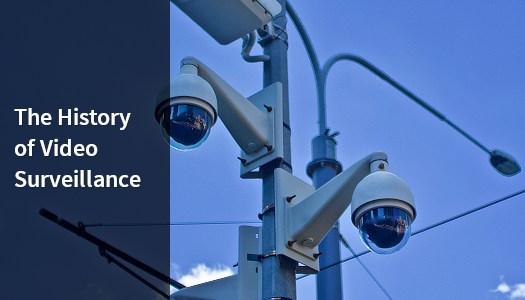Video surveillance is used throughout many parts of the world today. Some people find it a revolution of safety and security, some people find it to be to intrusive. Whatever your stance, CCTV and video surveillance technology is going to stay and become more powerful. How did video surveillance first appear and become what it is today?
The first documents of video surveillance detail that it was created by a Soviet scientist called Léon Theremin. Léon Theremin also created the Theremin, the electronic musical instrument that doesn’t require physical contact. Back to the first video surveillance system, which was a camera with a wireless transmitter and receiver. This system was demonstrated to Joseph Stalin and other high ranking Soviet officials, winning their approval. It was then installed in the courtyard of the Kremlin in Moscow, being used to monitor people visiting.
In 1942, another early CCTV system was invented by in Nazi Germany. This was used to observe the launch of V-2 rockets. The US was quick to follow interests in video surveillance technology and by 1949, a video surveillance system was commercially available.
Colour cameras became available in the 1950s. With these early cameras, debates ensued about if black and white or colour was better for surveillance. Black and white provided better low light sensitivity and resolution. Colour on the other hand assisted with identifying the colour of a person’s clothing and features.
Earlier surveillance cameras were generally used for viewing due to their not being many good options for video recording. Reel to reel tape recording systems were available but complex and challenging to use. Once videocassette recorders (VCR) were introduced in the 1970s, this helped increase the popularity of surveillance cameras as recording the video content became easier and more accessible.
The introduction of IP cameras in the mid 90s was another leap forward for surveillance. These cameras now used Ethernet network cables and the signals were now digital, rather than analog. The initial IP cameras had a resolution similar to analog cameras, though by 2002 a 1.3 megapixel (1280 x 1024 pixels) was released, which was over four times the resolution of older VGA analog cameras.
Commercial development continued and by 2003, large companies such as Panasonic, Sony and Samsung were researching and creating their own IP camera variants. By 2007, high performance megapixel IP cameras were developed.
Once 2014 hit, IP cameras dominated the video surveillance market. There were more IP cameras sold than their analog equivalents. These days, it is estimated that there are over 100 million surveillance cameras across the world.
Today, professional surveillance cameras have grown immensely in terms of capabilities, offering businesses, organisations and government sectors with sophisticated options to protect their property. IP cameras today have far better low light sensitivity, wider dynamic range and long distance lenses. 4K camera options now exist, though with these a good suitable lens can be quite expensive, thus be careful of the quality if you find one for very cheap. Even the domestic consumer market has grown, now offering simpler surveillance systems that can be setup easily in DIY applications. Competitive pricing is another big factor of the domestic consumer market. Various simple cameras exist now that can be setup and integrated with your home network, allowing you to access and view their footage easily via a web browser or mobile app.
The history and development of video surveillance, like much technology, was created and spurred forth by government and commercial competition. Today it is integrated throughout our lives more intricately than ever before and this integration will continue to grow. With the technology not stopping development anytime soon, expect to see even more powerful and portable cameras for professional and domestic use.


